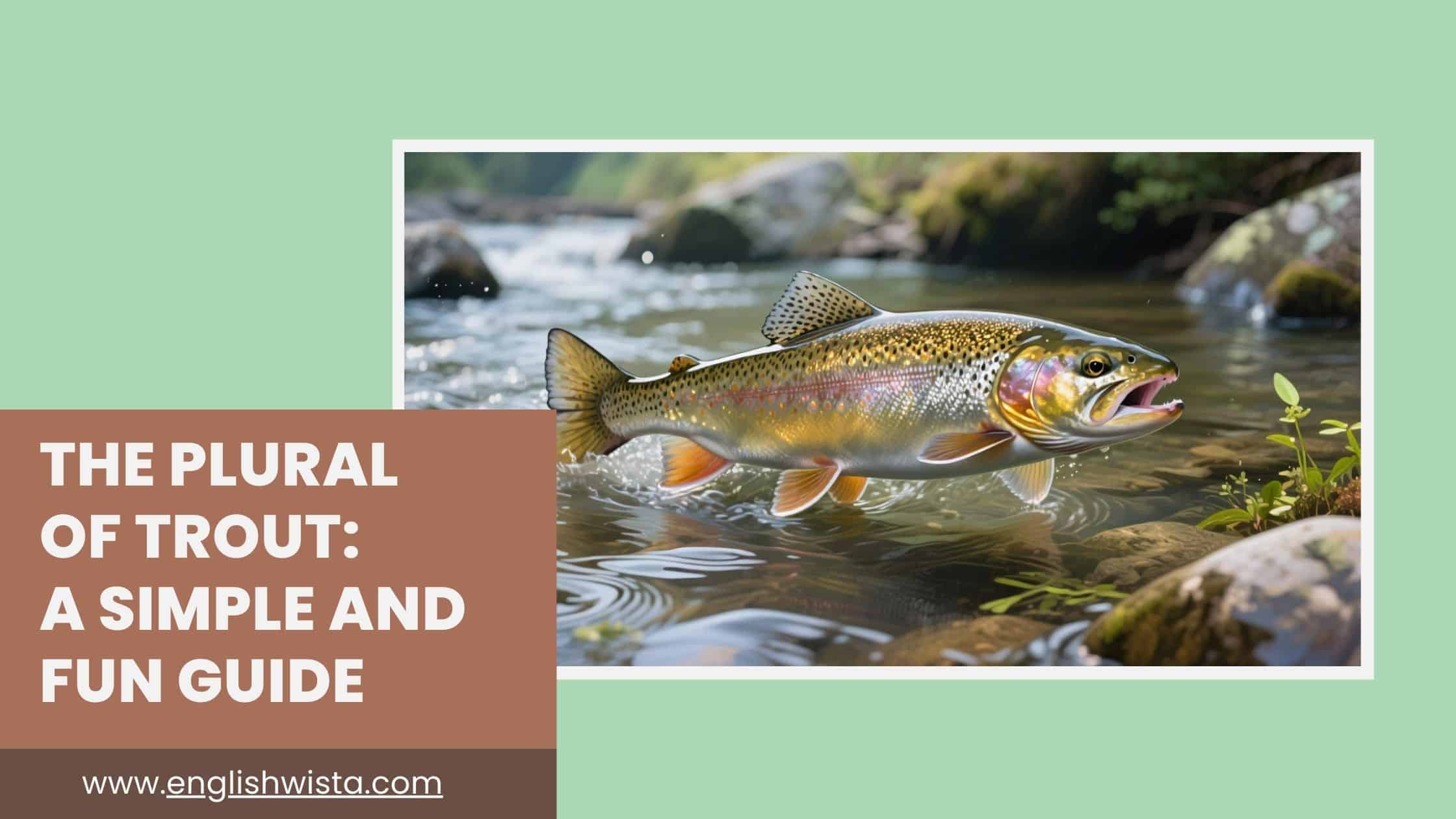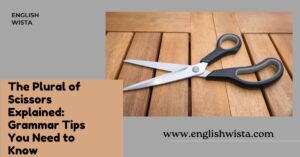Have you ever been out fishing or reading a story about rivers and fish, and you stopped to wonder, “Wait… what’s the plural of trout?” It’s a good question! English can be tricky, especially with words that don’t follow the “add an s at the end” rule. Some animals play by their own rules, and trout is one of them.
In this article, we’ll take a friendly, step-by-step look at the plural of trout. We’ll break it down in simple terms, answer common questions, and share plenty of examples so that by the end, you’ll feel completely confident using the word in everyday situations. Let’s dive right in!
What is the plural of trout?
The plural of trout is… trout! That’s right there’s no change at all.
- One trout
- Two trout
- Ten trout
- A school of trout
So, when you talk about more than one trout, you don’t add an s at the end. It stays the same whether you mean one fish or many fish.
Why doesn’t trout change in the plural?
This is where English gets interesting. Some animal names don’t change when we make them plural. These words are called “zero plurals.” That simply means the singular and the plural look exactly alike.
Other examples of zero plurals include:
- fish → fish
- deer → deer
- moose → moose
- sheep → sheep
So, trout belongs to this special group. English borrowed the word trout from Old English (truht) and Old High German. Over time, the word settled into modern English, keeping this unique feature.
Is trout singular or plural?
Here’s a common question: if the word trout can be both singular and plural, how do you know which one it is? The answer depends on the context of the sentence.
- Singular: “I caught a trout in the stream.” (Here, it means one fish.)
- Plural: “We saw five trout swimming together.” (Here, it means more than one fish.)
The words around trout usually tell you whether it’s singular or plural. If you see numbers like five or words like many, you know it’s plural. If the sentence uses a or one, you know it’s singular.
Does trouts exist?
Good question! Technically, trouts can exist in special situations, but it’s not common. Most of the time, people say trout for both singular and plural.
The word trouts may be used when talking about different types or species of trout. For example:
- “The museum had displays of various trouts from around the world.”
This means different species, not just many fish of the same kind.
So remember:
- Everyday use → trout (no s)
- Special scientific or species-related use → trouts (with s)
Examples of trout in sentences
Let’s practice with some simple sentences to see how trout works.
Singular examples:
- “She caught a large trout in the lake.”
- “That trout looks delicious.”
- “A trout swam past my boat.”
Plural examples:
- “We spotted several trout near the rocks.”
- “Fishermen enjoy catching trout in mountain streams.”
- “The chef prepared grilled trout for dinner.”
Notice how the word doesn’t change at all it’s the same in both sets of sentences.
Comparing trout with other animal names
Sometimes it helps to compare. Let’s look at trout next to other animals:
- Trout → Trout (zero plural, no change)
- Fish → Fish (also zero plural, no change)
- Deer → Deer (zero plural again)
- Cat → Cats (regular plural, just add s)
- Dog → Dogs (regular plural, add s)
As you can see, trout follows the same pattern as fish and deer, but not like cat or dog.
Fun facts about the word trout
Now that we’ve covered the grammar, let’s add a little extra flavor with some fun facts!
- Origins of the word: The word trout comes from Old English truht, which itself came from Latin tructa. It has been in English for over a thousand years!
- Collective noun: Did you know the collective noun for trout is a “hover” of trout? You can also say a “school of trout,” just like with many fish.
- Cultural appearance: Trout often appear in stories, poems, and even cooking shows. They symbolize freshness, rivers, and nature.
- Different species: There are many kinds of trout, such as rainbow trout, brown trout, and brook trout. In these cases, the word trouts might show up in scientific writing.
What about trout in cooking?
If you’ve seen a menu at a restaurant, you might have noticed the word trout listed, like “Grilled Trout” or “Smoked Trout.” Even when serving more than one fish, chefs often write trout without adding s.
For example:
- “The restaurant serves fresh trout daily.”
This could mean one fish per dish or multiple fish in the kitchen, but the word stays the same.
How to remember the plural of trout
Here’s a simple trick to keep it in mind:
- Think of trout like fish.
- If you wouldn’t say “fishes” in daily conversation, you also wouldn’t say “trouts.”
Repeat this thought: “One trout, many trout.” The phrase is short and easy to remember.
Common mistakes to avoid
It’s normal to feel unsure about words like trout. Let’s highlight the mistakes so you can avoid them:
- Adding s: Saying trouts when you mean more than one fish of the same type. (Only use trouts for species.)
- Forgetting context: Not checking the words around trout to see if it’s singular or plural.
- Mixing with fish: Remember that fish and trout both follow the same zero plural rule, so keep them consistent.
Quick recap of the rules
Let’s summarize everything we’ve learned so far:
- The plural of trout is trout.
- Use trouts only when talking about different species.
- Context tells you if it’s singular or plural.
- Remember the phrase: “One trout, many trout.”
Conclusion
So, what’s the takeaway? The plural of trout is super simple it doesn’t change! Unlike cats and dogs, trout doesn’t need an s to show that there’s more than one. It stays the same whether you’re talking about one fish or an entire school.
Now, the next time you’re fishing, reading, or ordering at a restaurant, you’ll know exactly how to use the word without hesitation. Just remember: one trout, many trout. And if you want to sound extra smart, you can even mention that trouts is possible when talking about species.
Learning little quirks like this makes English fun. It shows that language isn’t always about strict rules it’s also about tradition, history, and usage. So enjoy the next time you see a trout, or maybe even a whole hover of them, and smile knowing you’ve mastered this little piece of English.



